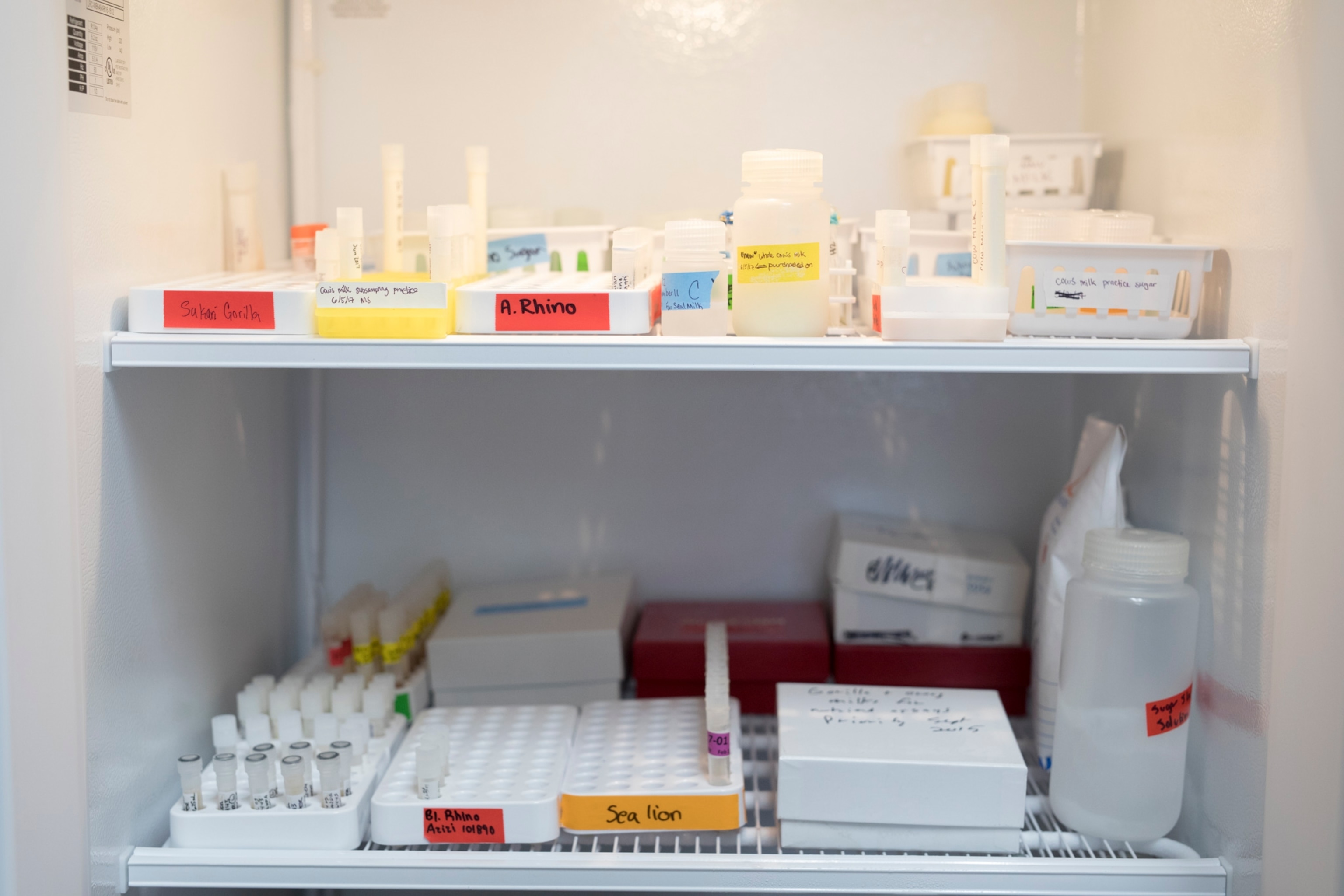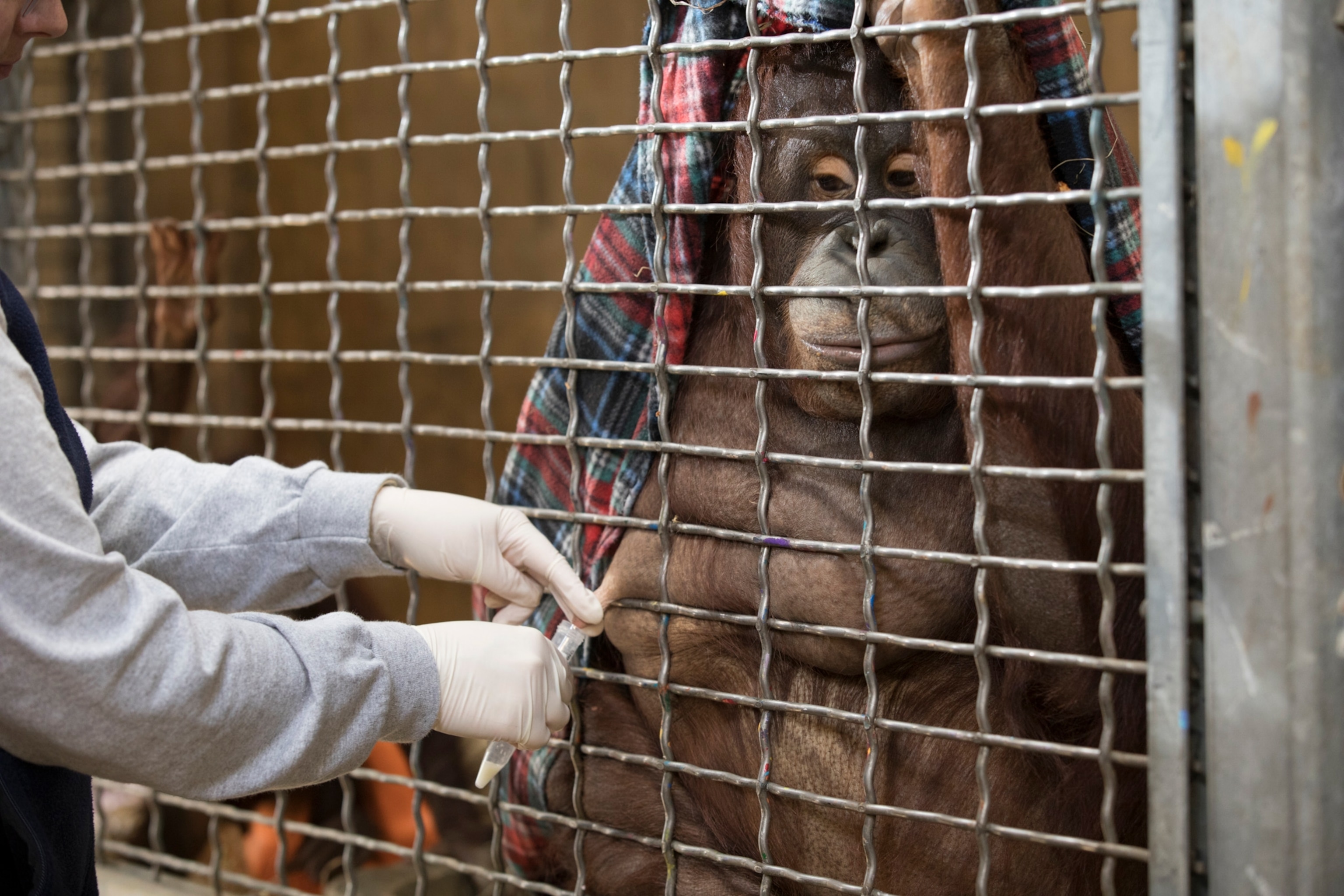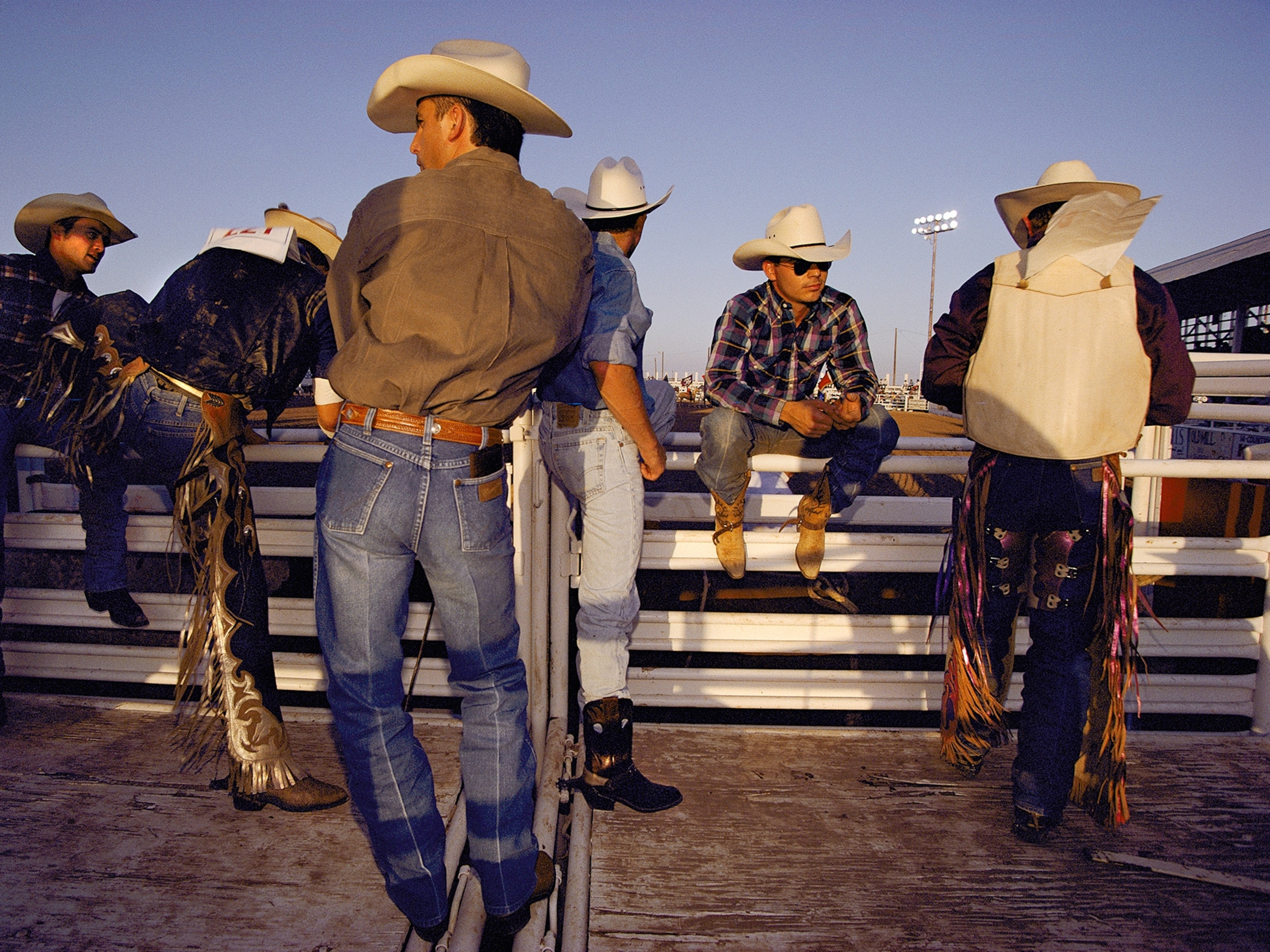Like many science labs, the Conservation Biology Institute inside the Smithsonian’s National Zoo is brimming with vials. Maybe it’s because I was six months pregnant when I visited, but the samples being stored in these vials, held at the institute’s animal nutrition department, seemed especially priceless.
These are milk samples—exotic animal milk samples, to be exact, and the National Zoo has the largest and most diverse collection of them in the world.
Research on ice
One upright freezer holds a dozen or so little bottles filled partway with a brownish substance and sitting in a tray marked “fur seal.” Cardboard boxes with the word “marmoset” scribbled on them line the shelves of a walk-in freezer. Around the corner, a chest freezer is set at minus 82 degrees Celsius. Inside it, vertical racks hold countless frosty containers bearing labels like “hippo,” “gorilla,” and “African elephant.”
Altogether, the freezers hold more than 16,000 samples procured from more than 200 species of mammals. But why?
“This is a research collection,” says scientist Mike Power, who since 2011 has been organizing, curating, and managing the repository, which began as an informal assortment in the late 1970s. “It has basic and applied science value,” he says.
Basics of animal milk
In the basic sense, Power uses the milk to study the evolutionary history of different species’ milks, which can offer clues to how human milk evolved.


“Milk and lactation are incredibly ancient; the origins may be as far back as 300 million years ago,” he says. Mammal milk is generally composed of varying levels of fat, protein, lactose, and minerals, but milks differ dramatically across species. Human milk, for example, contains relatively high levels of fat and protein, needed for the rapid growth and brain development that infants undergo in their first year. By contrast, orangutan milk is low in fat and protein, because orangutan babies grow slowly.
On the extreme end, armadillo milk contains the highest levels of protein in any milk Power has studied. This makes sense, he says, because an armadillo pup has to make a shell, which requires calcium and phosphorous, and “a lot of that protein [called casein] is simply a calcium and phosphorous delivery system.”
Power is now studying the evolutionary connection between the armadillo and its relatives the sloth and giant anteater, whose milks are also notably high in protein. (In a twist, scientists also discovered a spider that makes milk.)
A formula for success
On the applied side, the data Power gets from analyzing the various milk samples are crucial to developing formulas for newborn animals who aren’t able to nurse. Fiona, the famous hippo born six weeks premature at the Cincinnati Zoo in 2017, survived in large part because of Power’s research. After she was born, her care team collected some samples of her mother’s milk, which they sent to Power.
Based on his analysis, Fiona’s team was able to develop a formula “recipe” that approximated the amount of protein, fat, sugar, and minerals she would get if she hadn’t been too weak and small to nurse from her mother.
No pump required
My visit to Power’s lab included an invitation to witness an animal being milked. A female Bornean orangutan named Batang had been providing samples weekly since her baby, Redd, was born. I had imagined Batang’s keeper hooking her up to a specially designed breast pump with complicated mechanisms. In fact, the method is astoundingly simple: A member of her care team samples the milk by hand.
Lactating primates like Batang have been trained to allow this, Power says, but if a mother doesn’t feel like participating, she is not pushed. This is crucial to the trust-building process.
On the day I was there, Batang and Redd were sitting close together with a blanket draped around their shoulders. Their keeper, Erin Stromberg, cooed at them and chatted away to Batang, trying to determine her level of interest in being milked. I hung back and tried to determine her level of interest in me. Finally, I caught her eye—hoping she might see my belly and sense a kindred spirit—and instantly she pulled the blanket down over her head.
When Batang is interested in being milked, she will come to the front of her enclosure and present her nipple, from which Stromberg will gently hand-express a few milliliters of the milk, which looks “pretty much like human milk,” says Power. In exchange, Batang receives a bit of fruit juice and some peanuts.

Training hippos and tigers
It is trickier to obtain milk from other species. How do you milk a 3,000-pound hippo, for example? In the case of Fiona’s mother, Bibi, the answer involved a chute and lots of loving attention. Because Bibi had been trained to allow technicians to perform ultrasounds on her belly when she was pregnant, she was accustomed to being touched on her underside. This helped immensely after Fiona was born, says Barbara Henry, the curator of nutrition at the Cincinnati Zoo. Bibi knew to walk into her chute, after which she’d receive treats from one of her keepers. Meanwhile, a second keeper rubbed her back as a third keeper praised her while milking her from below.
“Since we had the ability to collect milk from Bibi, we felt it was of the upmost importance to send what we could to [Power’s lab] to have it analyzed,” Henry says.
Taking milk from a tiger requires similar finesse, as Gail Hedberg, a neonatal care specialist for zoo animals and the co-founder of the Hand-Rearing Resource Center, would know. Over the course of several months in 2013 she worked with a team at the San Francisco Zoo to obtain milk samples from a lactating Sumatran tiger named Leanne. Like Bibi, Leanne had been trained to allow ultrasounds during her pregnancy. For milking, the animal was comfortable lying down in a small holding area and, after lots of practice, having her mammary glands touched.
“She was very competent, she did it very well,” says Hedberg, who then sent the samples out for analysis. One important finding: Tiger milk contains significant levels of taurine, a vital amino acid that is also present in the milk of humans and polar bears.
Volunteers wanted
For animals that aren’t amenable to training or touching, zoo veterinarians will sometimes take “opportunistic samples” from a lactating mother who might be sedated for a routine procedure, such as a tuberculosis test. In other instances, samples come in from researchers who are studying animals in the wild. But animals are never put under for milk sampling alone, Power says, nor are zoo animals forced to submit to milk collection for his repository.
“It’s always voluntary.”
After my son was born in early 2018, the Smithsonian’s National Zoo also had a new arrival. A Western lowland gorilla named Calaya had given birth to an adorable male named Moke. Throughout her pregnancy, Calaya had been trained to allow ultrasounds in the same way that Batang was. A first-time mom, Calaya was trained to nurse her baby and care for it, which Power says she has been doing beautifully.
As for having her milk collected, she hasn’t been as enthusiastic. While she did allow some samples to be taken early on after delivering Moke, she now prefers not to be bothered. As a fellow mom, I really can’t blame her.








